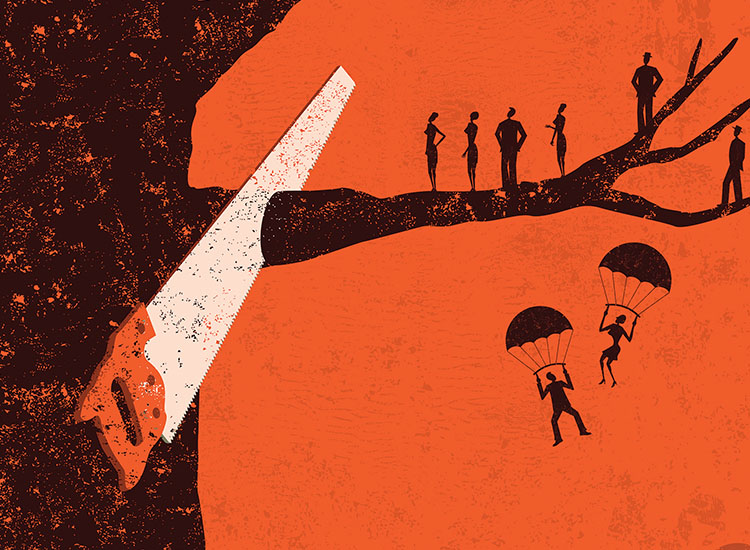The secret to resilience during COVID-19
There is no magic pill or sparkly fairy dust that can be used to create resilience. But what are the key aspects of resilience to focus on during COVID-19?
Many people know the opening lines of Charles Dickens’ A Tale of Two Cities, but you rarely see the full text quoted.
‘It was the best of times, it was the worst of times, it was the age of wisdom, it was the age of foolishness, it was the epoch of belief, it was the epoch of incredulity, it was the season of Light, it was the season of Darkness, it was the spring of hope, it was the winter of despair, we had everything before us, we had nothing before us, we were all going direct to Heaven, we were all going direct the other way.‘
For a book written in 1859, about events that had taken place 70 years previously (the French Revolution), it seems to be a pretty accurate depiction of 2020 as well.
If there is one theme to the current situation, whether from a global, national or personal level, it is that of uncertainty. And from uncertainty (as Yoda might have said) comes anxiety, anxiety leads to fear and fear leads to all sorts of personal pressures that have significant negative impacts on us all.
I don’t think that there is a single person reading this who is leading their life in the same way as they did even six months ago. There is certainly no business that can maintain the business model that they used pre-COVID-19. And so we come to a word that has been central to our discussion of risk management for the last ten years, and which has seemingly deserted us at exactly the time we have needed it most – resilience.
We often see resilience as an almost abstract concept, one that has to do with character and national virtue. The Foreword to the 2017 UK National Risk Register (which identified pandemic influenza as its number one threat in terms of both likelihood and impact) takes exactly this approach.
‘Resilience does not come easily but the UK has long experience. Call it what you will, but whether through the fabled “stiff upper lip”, “Blitz spirit” or just a stubborn determination, our resilience can be seen at the forefront of our handling of emergencies.’
For me, this is a fundamental misunderstanding of both the concept and the components of resilience. All of those national characteristics (which are of course not limited to the UK – try a Russian winter if you really want to know about resilience!) are what are needed because there was a failure of resilience. If resilience was effective, then those qualities would not be needed.
So what are some of these components? The truth is that they are in the main boringly mundane, and are known to every effective risk manager. There is, unfortunately, no magic pill or sparkly fairy dust that can be used to create resilience magically when it is needed.
One of the first aspects of resilience is sensitivity to change in the environment you are operating in. A farmer who is more aware of the coming rain will be more resilient than one who cannot read the signs. The ability to be aware of COVID-19 when it was first on the risk horizon would have been a significant benefit to government organisations and commercial corporations around the world. Having had that risk awareness, you would then hope that there would be a sense of urgency in acknowledging the threat and then engaging in an exercise to model the potential significance and impacts of that event should it escalate from potential to actual. A culture of strong leadership is another aspect of resilience that cannot be ignored. In this sense, strong leadership includes the capacity to be inclusive, allowing multiple voices to be heard, but also decisive, in that once a path has been agreed, then there needs to be sustainable support for that, despite the fact that it is almost certain that the way forward will meet obstacles and unexpected challenges. Spare capacity is a significant issue in building resilience, as the lack of spare capacity means that even the slightest disruption can put the whole programme in danger. The presence of spare capacity creates time and space for decisions to be made, as well as to allow the occasional mistake or false choice to be recovered from.
However, the most significant aspect of resilience, and the one that is actually the focus of this article, is that resilience is about learning. The secret to resilience is to take advantage of every opportunity to learn, to improve, to enhance – and then when future threats do arise, resilience is not about recovering faster, but about preparing better.
The last few months have been, for almost all of us, a simple matter of survival.
But it is now, as we enter the period of long recovery, that the aspects of resilience discussed here will create a significant differential between those organisations that do have the ability to adapt to the realities of the post-lockdown reality, and are able to develop strategies to allow them not just to survive in that environment but to take full advantage of the opportunities that will undoubtedly be there, and those that don’t.
Dr David Rubens
Executive Director
Institute of Strategic Risk Management
ISRM (Institute of Strategic Risk Management) is a global membership organisation that offers a space for senior practitioners, academics and policy makers to come together to explore the issues associated with current risk and crisis management challenges. It has been running a full free-to-attend programme of events throughout the COVID-19 lockdown. Please contact jen.deleon@theisrm.org.

